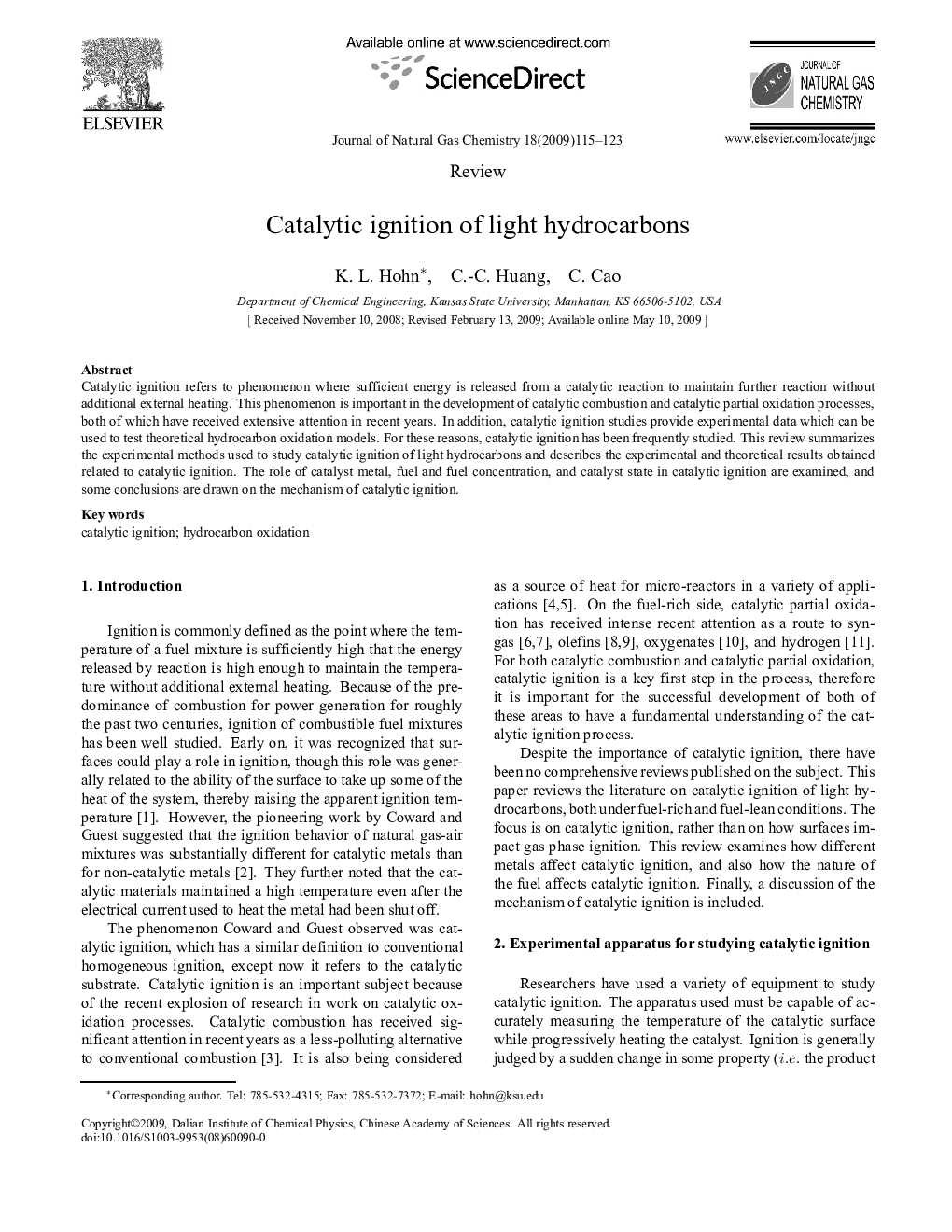| Article ID | Journal | Published Year | Pages | File Type |
|---|---|---|---|---|
| 71666 | Journal of Natural Gas Chemistry | 2009 | 9 Pages |
Catalytic ignition refers to phenomenon where sufficient energy is released from a catalytic reaction to maintain further reaction without additional external heating. This phenomenon is important in the development of catalytic combustion and catalytic partial oxidation processes, both of which have received extensive attention in recent years. In addition, catalytic ignition studies provide experimental data which can be used to test theoretical hydrocarbon oxidation models. For these reasons, catalytic ignition has been frequently studied. This review summarizes the experimental methods used to study catalytic ignition of light hydrocarbons and describes the experimental and theoretical results obtained related to catalytic ignition. The role of catalyst metal, fuel and fuel concentration, and catalyst state in catalytic ignition are examined, and some conclusions are drawn on the mechanism of catalytic ignition.
